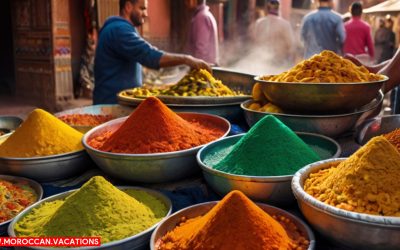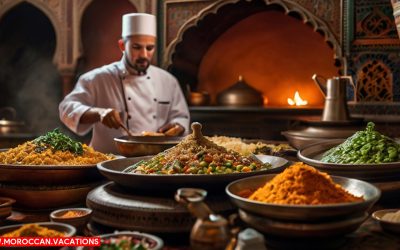The Vibrant History of Moroccan Spices
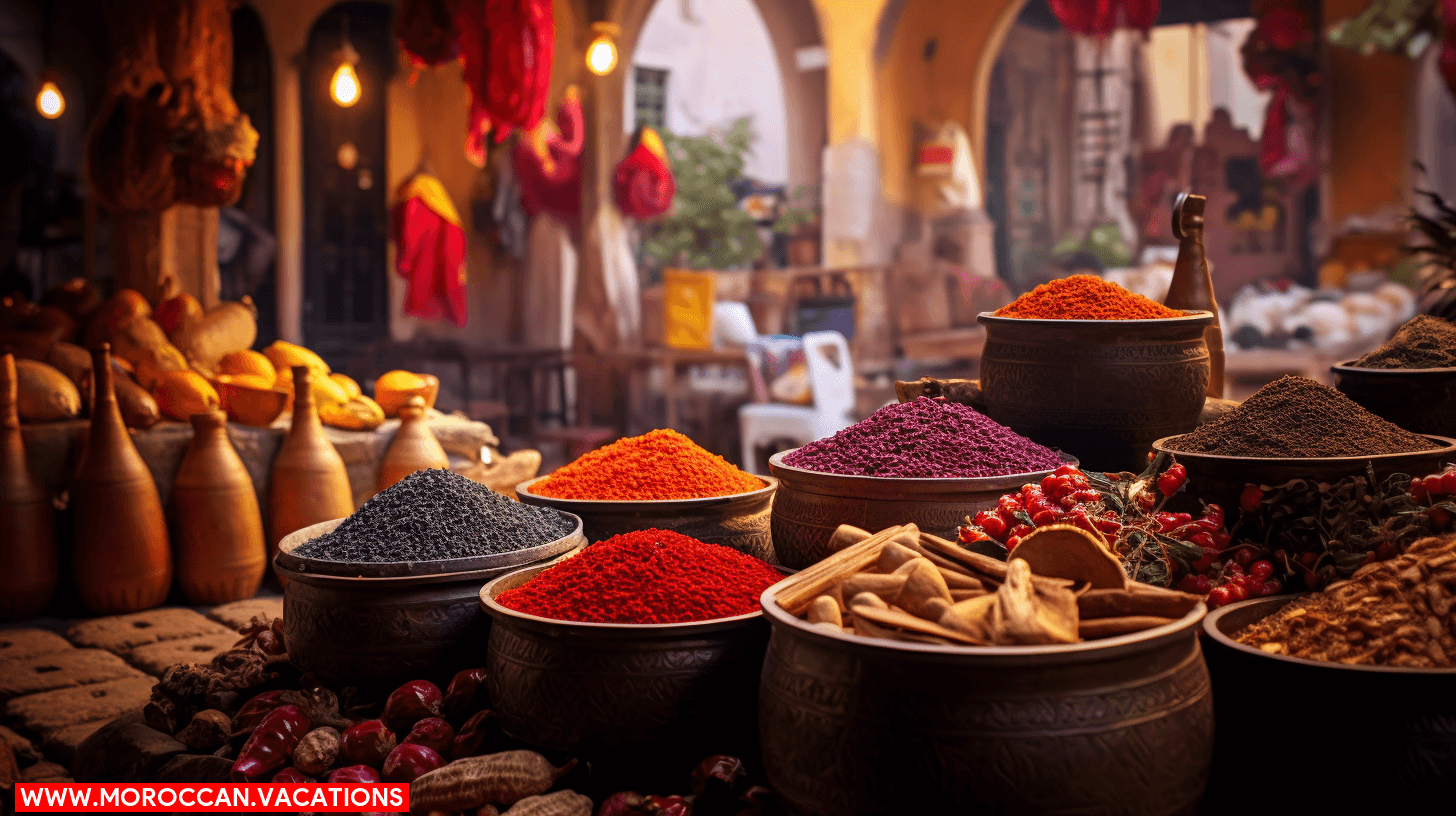

You’re about to embark on a sensory journey to Morocco. You’ll unravel the vibrant history of spices, savor the fiery allure of Harissa, and relish the refreshing role of mint. You’ll understand why cumin’s backbone of Moroccan cooking, and why saffron is dubbed the golden spice. Get ready, you’re diving deep into the aromatic tapestry of traditional Moroccan spices and herbs, revealing their influence on global cuisine. Your culinary adventure starts now.
Delving into the vibrant history of Moroccan spices, you’ll find yourself on a journey through time, immersed in a rich tapestry woven with culinary traditions and trade routes. The Spice Trade Influence on Morocco’s culinary evolution is undeniable. It was a path paved by ambitious traders and explorers, seeking the aromatic treasures of the East. This relentless pursuit of flavor led to the fusion of cultures, turning the Moroccan culinary landscape into a melting pot of taste profiles.
Take a stroll through any Moroccan souk and you’ll be enveloped by the scent of exotic spices. From the fiery heat of harissa to the subtle warmth of ras el hanout, each spice tells a tale of trade and transformation. You’ll realize the profound impact trade routes had on the culinary evolution of this North African nation, turning its cuisine into a flavorful testament of its historical interactions.
Understanding this history, you’ll see how freedom of movement, trade, and cultural exchange shaped Morocco’s gastronomic identity. The vibrant history of Moroccan spices isn’t just about food. It’s a saga of human endeavor, resilience, and the age-old desire for culinary freedom.
Key Ingredients in Moroccan Cuisine
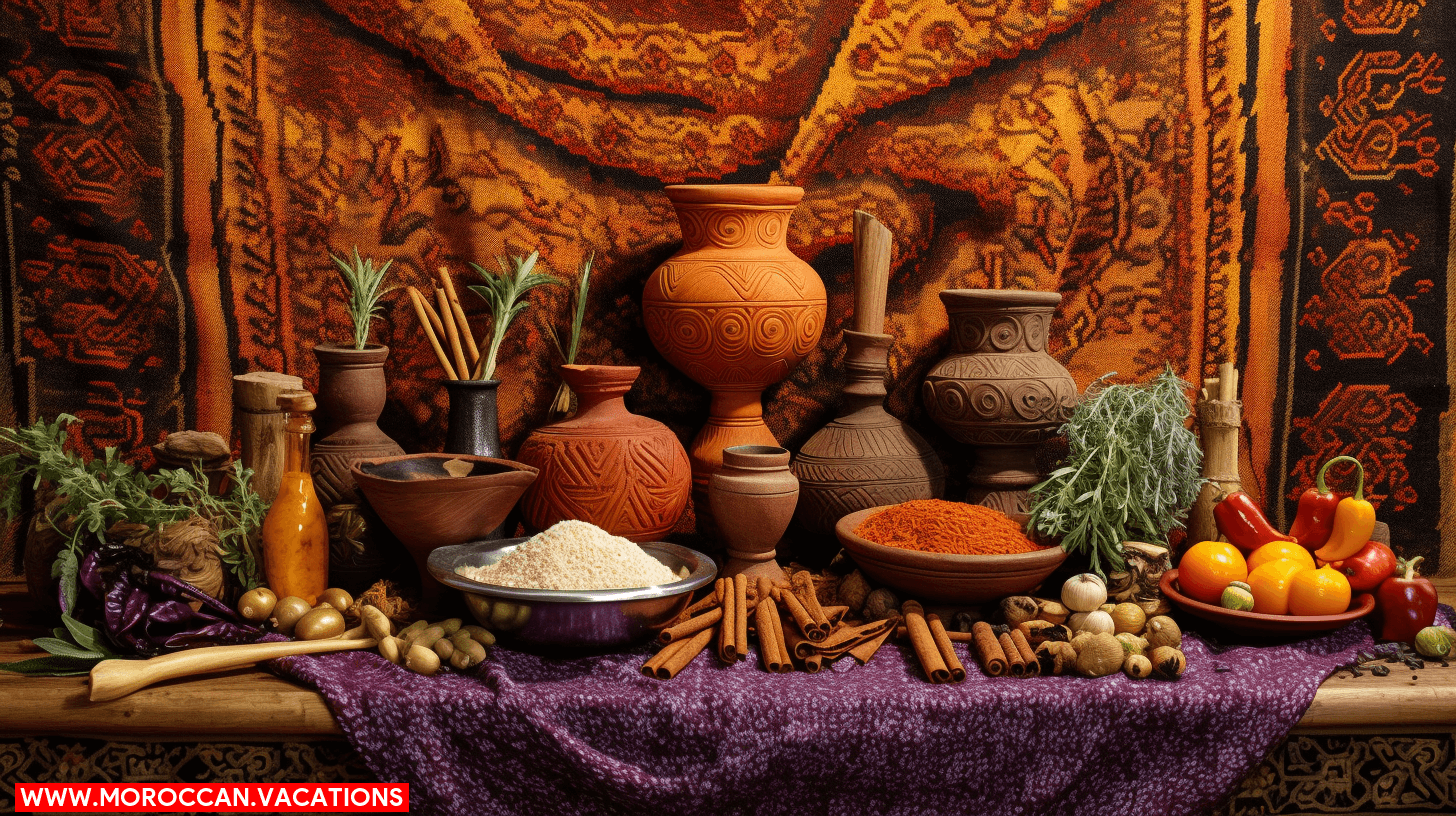

Now that you’ve journeyed through the historical spice routes, it’s time to delve into the heart of Moroccan cuisine – its key ingredients. Moroccan Tagines and olive usage are not just culinary techniques, they’re cultural touchstones, imbued with centuries of tradition.
Moroccan Tagines are a testament to the country’s resourcefulness. This slow-cooked stew, named after the conical earthenware pot it’s cooked in, utilizes various meats, vegetables, and a tapestry of spices. Each region has its own Tagine variations, a reflection of Morocco’s diverse topography and climate.
Olive usage in Moroccan cuisine is extensive and varied, underscoring the ingredient’s versatility. Olives add a briny depth to dishes and are often used in marinades, salads, and of course, Tagines. Olive oil, too, is a staple, adding a rich, fruity note to dishes. The Moroccan olive industry is a significant part of their culture and economy, with the country being one of the world’s leading olive producers.
These ingredients are more than just food; they’re a passport to the heart of Morocco- a vibrant tapestry woven from age-old traditions, regional influences, and an innate love for aromatic flavors. Embrace your culinary freedom by exploring these key ingredients in Moroccan cuisine.
Exploring the Flavors of Ras El Hanout
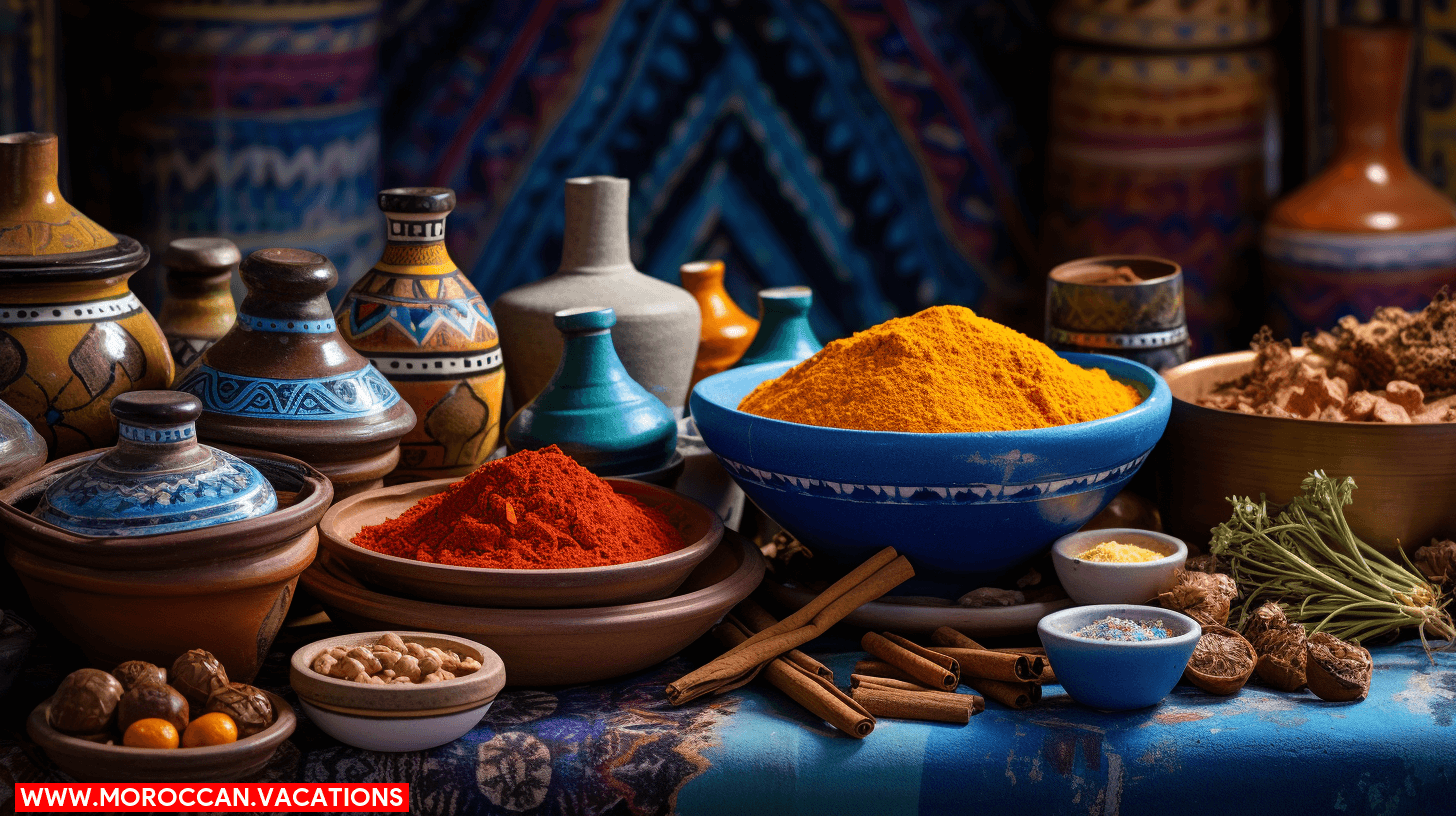

While you’re savoring the richness of Moroccan Tagines and the versatility of olives, don’t miss out on exploring the enigmatic blend that is Ras el hanout, a spice mix that’s as integral to Moroccan cuisine as it is varied in its composition. This fascinating concoction, traditionally composed of as many as 30 different spices, truly embodies the Moroccan culinary spirit of freedom and creativity.
Ras El Hanout’s medicinal properties are often lauded. It’s believed to aid digestion, fight inflammation, and even stimulate the libido. Each spice contributes a unique therapeutic element, creating a holistic wellness blend.
The unique blend techniques employed in creating Ras El Hanout are a testament to the depth of Moroccan spice artistry. Every family boasts its own secret recipe, with variations in proportion and choice of spices. Cardamom, nutmeg, mace, and turmeric often feature, but the real charm lies in the unexpected additions like dried roses or ash berries.
This freedom in composition is why Ras El Hanout is more than just a spice mix. It’s a testament to the Moroccan tradition of culinary diversity and creativity. So, as you explore Moroccan cuisine, let Ras El Hanout guide your senses through a world of aromatic complexity.
The Fiery Allure of Harissa
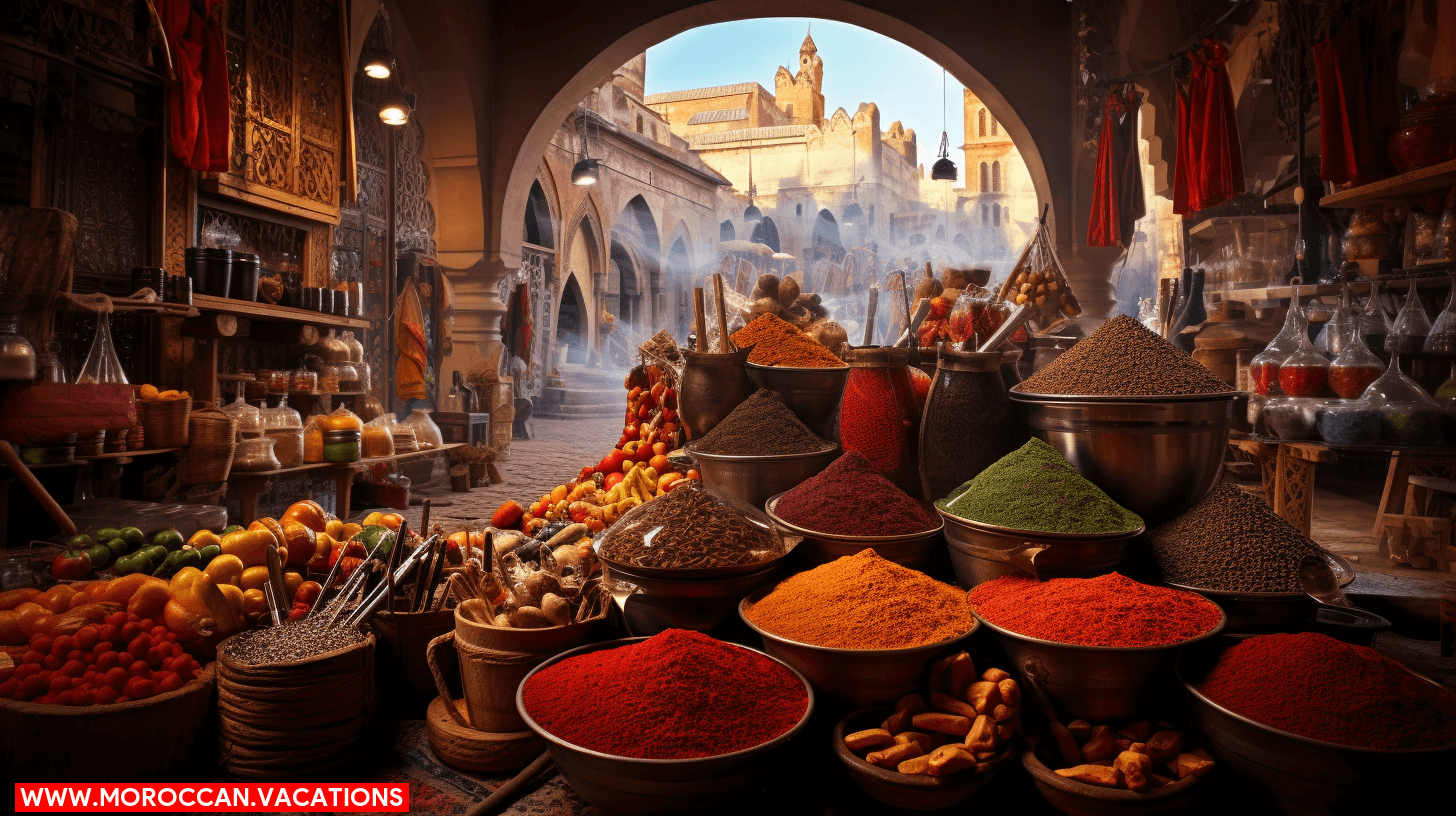

Often, you’ll find yourself drawn to the fiery allure of Harissa, a robust and versatile chili paste that’s a staple in Moroccan cuisine. This tantalizing condiment isn’t just a flavor powerhouse; it’s also packed with health benefits. Harissa’s health benefits include aiding digestion, boosting metabolism, and providing a generous dose of vitamin C.
Regional variations of Harissa abound, showcasing the diversity and richness of Moroccan culinary culture. Here are three notable types:
- Classic Harissa: This traditional version is a blend of red chilies, garlic, olive oil, and spices like coriander and caraway.
- Rose Harissa: Infused with rose petals for a fragrant twist, this variant is both spicy and sweet, playing a melody on your taste buds.
- Green Harissa: Made with green chilies and herbs, this version offers a fresh, herby kick to dishes.
The allure of Harissa lies not just in its fiery kick but also in its ability to transport you to the vibrant markets and sun-drenched landscapes of Morocco. As you explore this aromatic tapestry, you’re not just tasting; you’re experiencing a culture. So, embrace the alluring heat of Harissa and let it unlock new culinary freedoms for you.
The Role of Mint in Moroccan Dishes
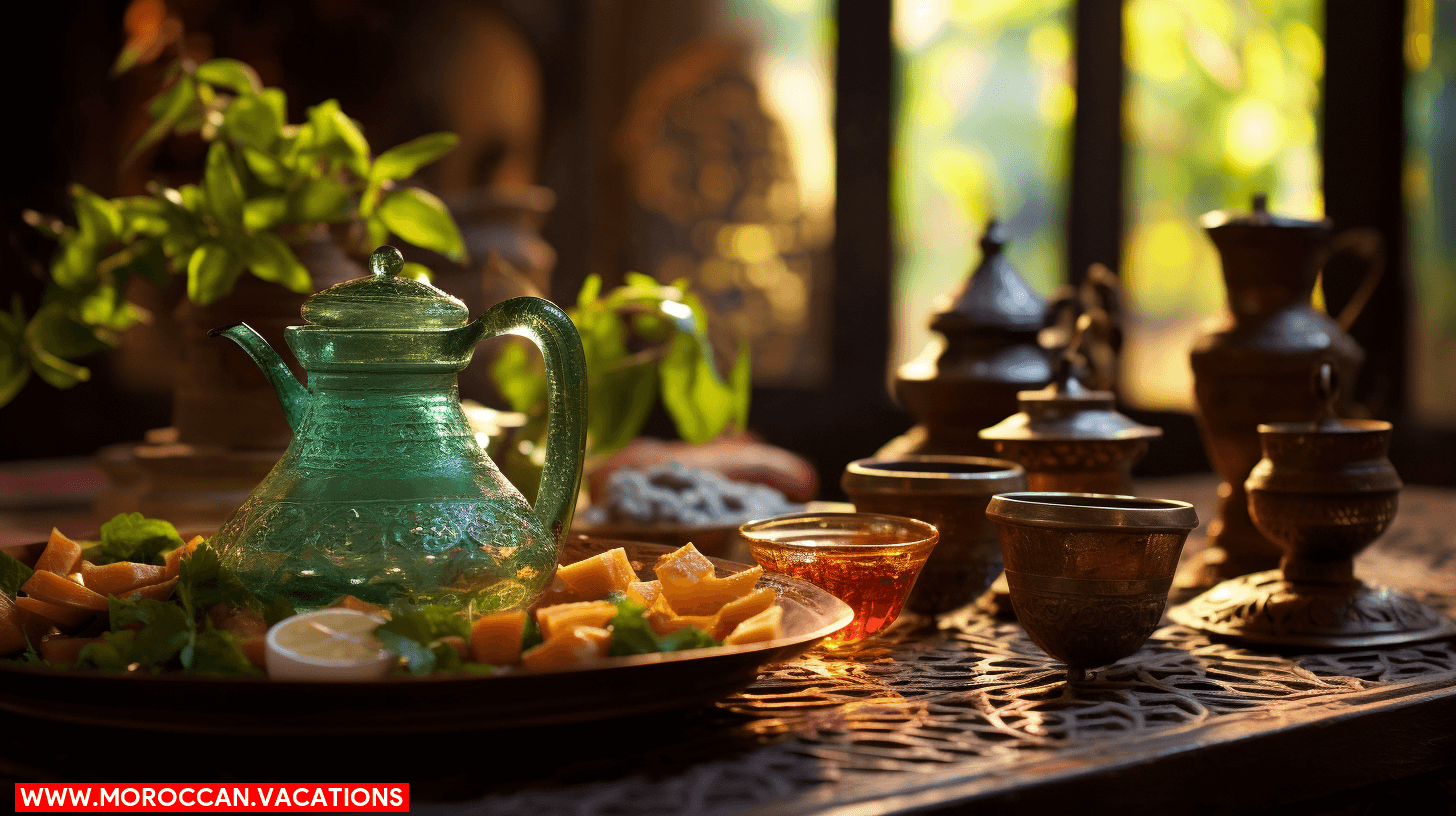

Just as you’ve savored the fiery kick of Harissa, you’ll find that mint, despite its seemingly simple nature, plays a crucial role in Moroccan cuisine. This humble herb is a staple in Moroccan homes, markets, and restaurants, and its vibrant flavor is woven into the fabric of the nation’s gastronomy.
Mint’s role extends beyond mere seasoning. It’s a symbol of hospitality and friendship, often served as Moroccan Mint Tea to guests. This refreshing beverage exemplifies mint infusion benefits, including aiding digestion and boosting mental alertness. It’s a perfect blend of sweetness, warmth, and a distinct minty freshness that whispers of Moroccan tradition.
Yet, the role of mint isn’t confined to tea. It’s used to balance the heat of dishes, adding a cool, refreshing contrast. Think of classic Moroccan salads, dips, and tagines – the presence of mint is a harmonious symphony of flavors.
In essence, mint is more than a simple herb in Moroccan cuisine. It’s a thread in Morocco’s aromatic tapestry, a testament to the nation’s rich culinary heritage. It’s a symbol of the country’s hospitality, a constant reminder of the old Moroccan saying: “He who leaves without drinking tea is as angry as a serpent.”
Cumin: The Backbone of Moroccan Cooking
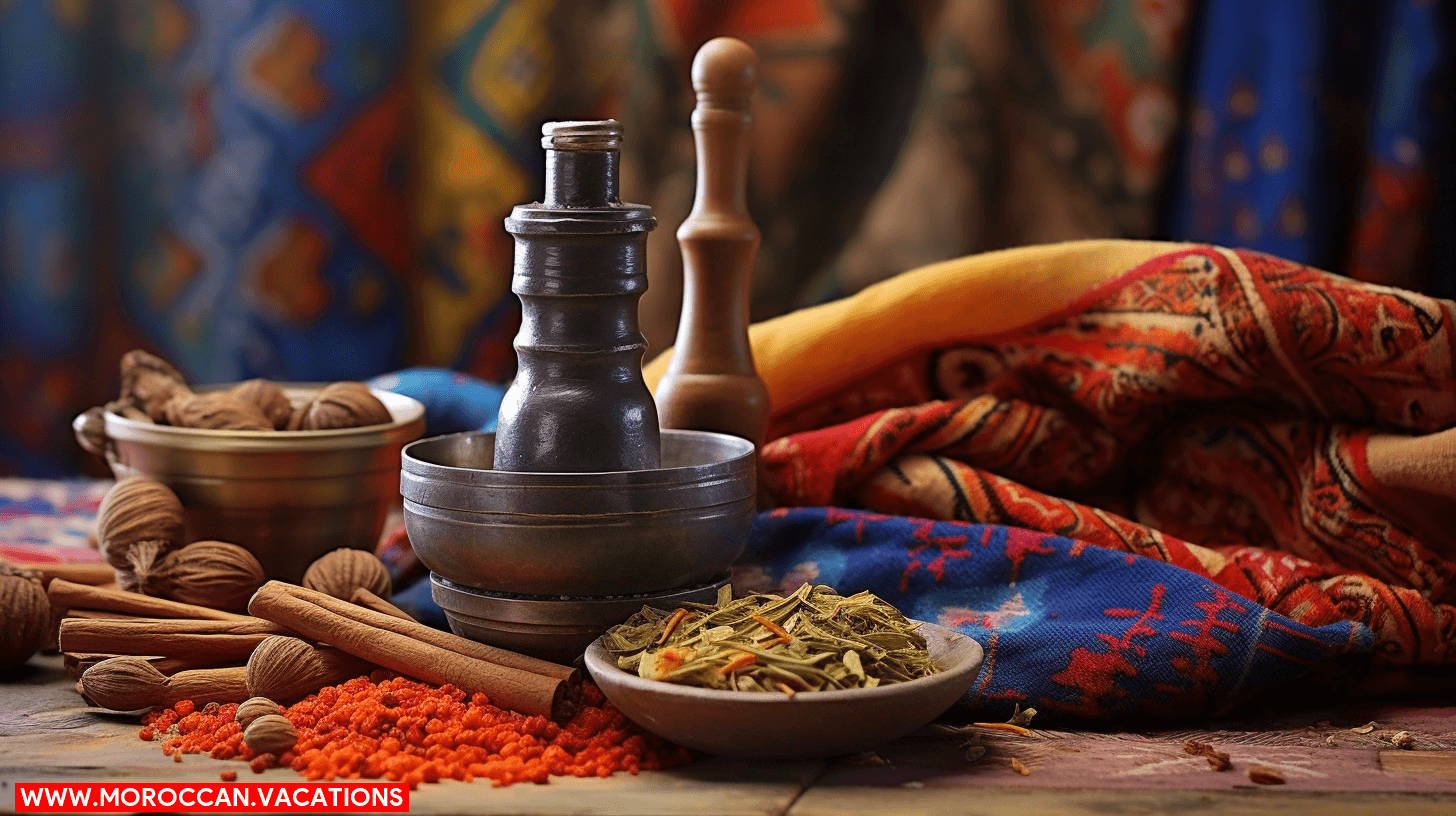

After relishing the refreshing touch of mint, you’ll find cumin, another cornerstone in the grand architecture of Moroccan cuisine, adding a whole new dimension to its dishes. Cumin’s earthy, warm profile is the backbone of many Moroccan dishes, underpinning flavors and tying together the colorful mosaic of spices used.
Your appreciation of cumin will deepen as you discover cumin’s health benefits and its cultivation process. This humble seed is not only a culinary marvel but also a powerhouse of health benefits.
- Digestive Aid: Cumin is known to stimulate digestive enzymes, aiding in digestion and reducing the chances of gastrointestinal problems.
- Rich in Iron: A spoonful of cumin can supply up to 20% of your daily iron needs.
- Antioxidant Properties: Cumin’s antioxidants can help fight inflammation in your body.
Cultivation of cumin is an age-old practice in Morocco, where it grows in abundance. The process involves a labor-intensive harvest, with each cumin seed handpicked and sun-dried to achieve the perfect balance of aroma and flavor. The incorporation of cumin in Moroccan cuisine thus signifies more than just flavor, it’s a testament to the Moroccan people’s relationship with their land and their enduring culinary traditions.
Saffron: Morocco’s Golden Spice
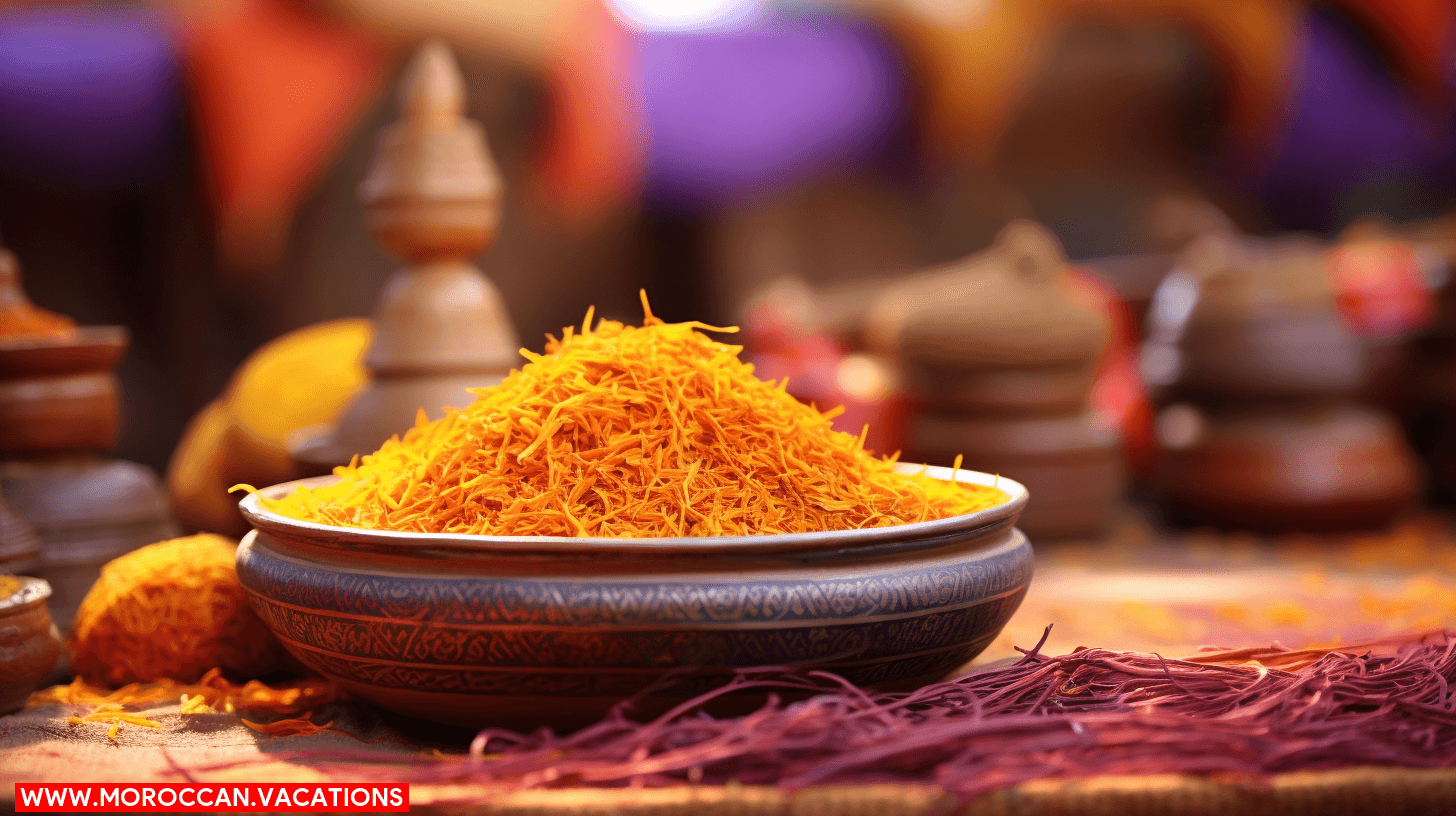

Moving on from cumin, you’ll be captivated by the allure of saffron, Morocco’s golden spice, revered for its distinct flavor, vibrant color, and intriguing medicinal properties. This exotic spice, often referred to as ‘red gold’, is harvested with painstaking care, employing traditional saffron harvesting techniques that have been passed down through generations.
Each saffron crocus flower yields only three delicate stigmas which are plucked by hand at dawn, then dried to produce the fragrant, crimson threads you’re likely familiar with. It’s a labor of love that underscores the value of this precious spice.
But saffron isn’t just a culinary delight. Its medicinal uses are deeply interwoven into Moroccan culture. Used as a potent antioxidant, it’s believed to boost mood, memory, and libido, while also providing relief from menstrual pain. Research validates some of these claims, adding a layer of scientific credibility to age-old traditions.
Your exploration into Moroccan spices wouldn’t be complete without understanding the importance of saffron. Its rich, pungent flavor, vibrant hue, and therapeutic properties weave a golden thread into the aromatic tapestry of Moroccan cuisine. This iconic spice, with its traditional harvesting methods and medicinal uses, truly embodies the spirit of Morocco’s culinary heritage.
How Moroccan Spices Influence Global Cuisine
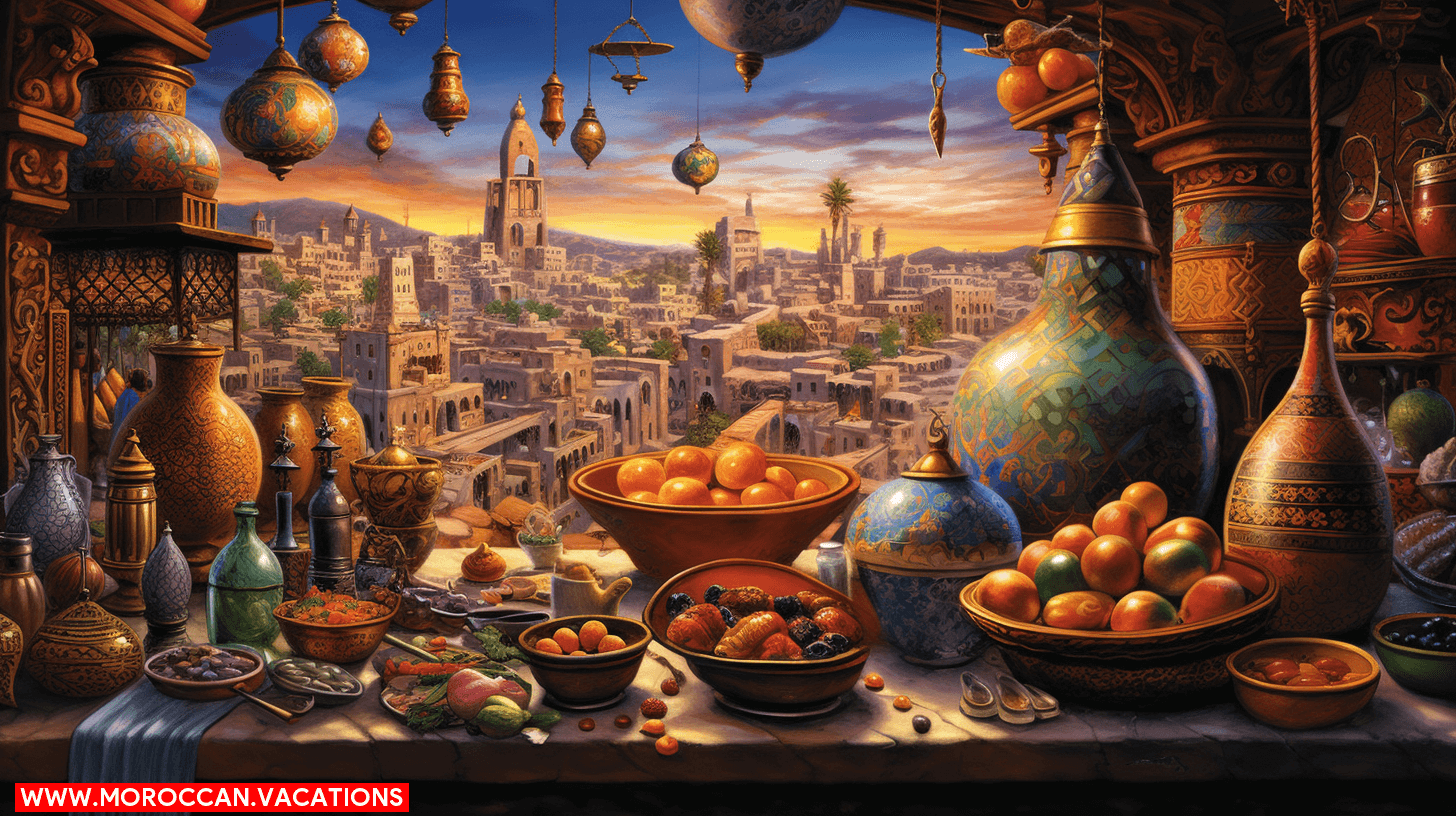

Now, let’s delve into how these Moroccan spices, including the golden saffron, have significantly influenced global cuisine, adding a unique flavor profile that’s hard to replicate. The Global Spice Trade has been instrumental in this Moroccan flavor infusion, serving as a conduit for the spread of these unique flavors.
- Saffron: Considered the gold of spices, saffron from Morocco has made its way into dishes around the world, such as Spain’s paella and India’s biryani, imparting its distinctive color and aroma.
- Ras El Hanout: This complex Moroccan spice blend, containing up to 27 different spices, has found favor in global kitchens. Chefs leverage its versatility to enhance everything from barbecue rubs to gourmet sauces.
- Argan Oil: An endemic Moroccan product, argan oil has gone global, not just in culinary uses but also in the beauty industry. Its nutty flavor adds depth to salads and grilled foods.
Thus, through trade and cultural exchange, Moroccan spices have left an indelible mark on global cuisine. They’ve allowed you to taste the essence of Moroccan tradition, giving you the freedom to explore the world from your kitchen. The influence is so pervasive, it’s hard to imagine the culinary world without them.
Introducing Ayoub Karbachi, a brilliant wordsmith and curator of the Moroccan Vacations website. Prepare to immerse yourself in mesmerizing narratives and extraordinary moments, as he unveils the allure of Morocco's captivating destinations like never before.
Related Articles
Vegetarian and Vegan Options in Marrakesh Street Food
Traditional Moroccan Vegetarian Tagines Are you tired of feeling limited when it comes to finding vegetarian and vegan options in Marrakesh's bustling street food scene? Well, we've got some good news for you! Get ready to embark on a culinary adventure filled with...
Street Food Safety Tips for Enjoying Marrakesh's Local Cuisine
Research Local Food Regulations Did you know that Marrakesh is home to a vibrant street food scene, offering a rich variety of local cuisine? To fully enjoy these culinary delights while ensuring your health and safety, it's important to follow a few simple tips. In...
The Influence of Arab Cuisine on Moroccan Culinary Traditions
Historical Background of Arab Influence Imagine yourself transported to the vibrant streets of Morocco, where the tantalizing aroma of spices fills the air and the sizzle of food cooking on open flames entices your senses. In this culinary paradise, the influence of...

